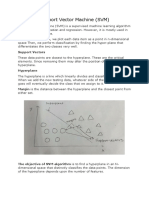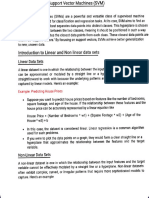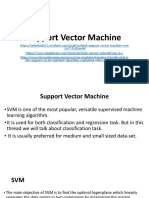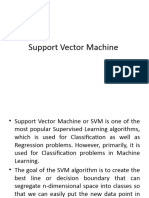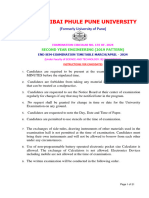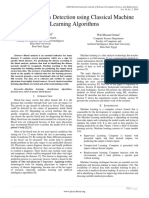0% found this document useful (0 votes)
13 views6 pagesSupport Vector Machine (SVM) Terminology Hyperplane WX + B 0 Support Vectors Margin Kernel Hard Margin Soft Margin
Support Vector Machine (SVM) is a supervised machine learning algorithm primarily used for classification tasks, aiming to find the optimal hyperplane that separates data points into different classes while maximizing the margin between them. SVM can handle both linear and non-linear data through the use of kernel functions, allowing it to map data into higher-dimensional spaces for better separation. While SVM offers advantages like high-dimensional performance and resilience to outliers, it also has drawbacks such as slow training on large datasets and sensitivity to noise.
Uploaded by
kathirkrish1000Copyright
© © All Rights Reserved
We take content rights seriously. If you suspect this is your content, claim it here.
Available Formats
Download as PDF, TXT or read online on Scribd
0% found this document useful (0 votes)
13 views6 pagesSupport Vector Machine (SVM) Terminology Hyperplane WX + B 0 Support Vectors Margin Kernel Hard Margin Soft Margin
Support Vector Machine (SVM) is a supervised machine learning algorithm primarily used for classification tasks, aiming to find the optimal hyperplane that separates data points into different classes while maximizing the margin between them. SVM can handle both linear and non-linear data through the use of kernel functions, allowing it to map data into higher-dimensional spaces for better separation. While SVM offers advantages like high-dimensional performance and resilience to outliers, it also has drawbacks such as slow training on large datasets and sensitivity to noise.
Uploaded by
kathirkrish1000Copyright
© © All Rights Reserved
We take content rights seriously. If you suspect this is your content, claim it here.
Available Formats
Download as PDF, TXT or read online on Scribd
/ 6








